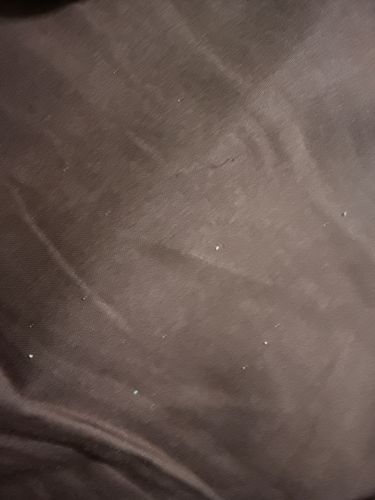Dust particles/lint (not an insect)
Scientific Name: Not applicable (not a biological entity). If interpreted as dust mites, species like Dermatophagoides farinae or Dermatophagoides pteronyssinus.
Order & Family: Not applicable (not an insect). If interpreted as dust mites, they belong to the Kingdom Animalia, Phylum Arthropoda, Class Arachnida, Order Sarcoptiformes, Family Pyroglyphidae.
Size: Varies from microscopic to a few millimeters for visible lint/dust. If interpreted as dust mites, they are microscopic, typically 0.2-0.3 mm in length.

Natural Habitat
Commonly found on fabric surfaces such as clothing, bedding, upholstery, and carpets in indoor environments.
Diet & Feeding
Not applicable, as these are likely inert particles. If interpreted as dust mites, their diet would consist primarily of dead skin cells and organic detritus.
Behavior Patterns
Given the lack of a clear image of an insect, and the appearance of small, scattered light-colored specks on a dark, fabric-like background, these specks are most likely dust particles, lint, or possibly very small debris rather than living organisms. Therefore, there are no specific behavior patterns associated with these. If, however, these were to be interpreted as dust mites (which are microscopic and thus not visible as distinct specks), their behavior would involve crawling and feeding on skin flakes within fabric environments.
Risks & Benefits
No risks or benefits associated with inert dust particles. If interpreted as dust mites, they are a common allergen for humans, leading to allergic reactions such as asthma, eczema, and rhinitis. They offer no direct benefits to humans, though they play a minor role in breaking down organic matter in indoor ecosystems.
Identified on: 8/18/2025